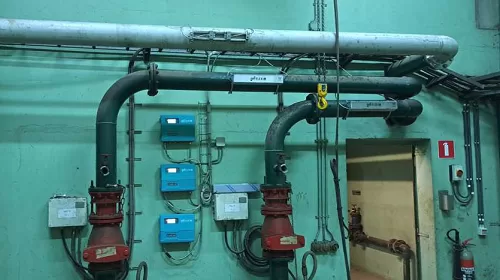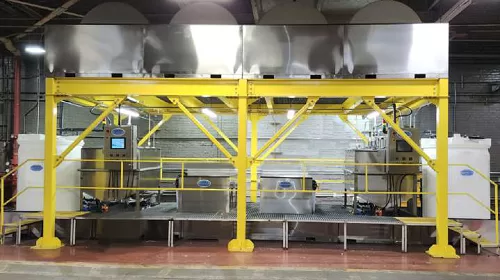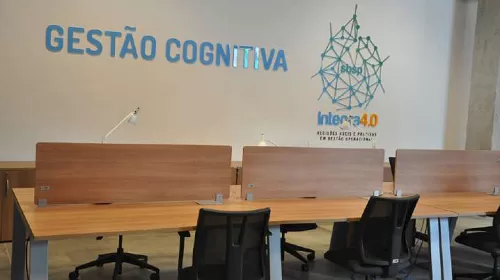By BindhyaMol K Junior Scientific Assistant, Kerala State Pollution Control Board & Harikumar P S (Corresponding Author) Senior Principal Scientist & Head, Water Quality Division
Abstract The faecal matter from on-site sanitation facilities such as septic tanks and pit latrines can pose significant health risks if it has not been adequately treated. In Kerala 95.2% of households have latrine facilities within the premises; it is higher than the national average (46.9%), but the safe management of faecal matter from on-site sanitation structures received limited attention. The study made an attempt to identify the efficiency of vermicomposting and electrocoagulation techniques for septage treatment. Introduction Kerala is one of the smallest states in India (38863 km2) covering merely 1.18% of the total area of the country. Kerala has moderately high rainfall (3000 mm), a fairly large number of rivers, chains of backwater bodies, and ponds. But most of these natural water bodies are polluted with bacterial contamination, which is mainly due to the direct discharge of wastewater (both grey water and black water) from the municipal sector (KCSTE, 2007). Harikumar & Bindhya (2012) assessed the quantity and quality of wastewater and greywater discharge in the selected local bodies of Kerala. Per capita consumption of water in the study areas varied from 183 lpcd to 148 lpcd which is higher than the national average of 135 lpcd. It was found that the majority (as much as 61%) of the families are disposing of their wastewater directly to either the drainage channels/irrigation channels or to the open spaces. In Kerala, the coverage of sewerage facilities, even in the City Corporations, is extremely low. Around 30% in Thiruvananthapuram and 5% in Kochi Corporation areas have sewerage facilities, probably one of the lowest in the country (Thiruvananthapuram Corporation, 2012; KSPCB, 2010). People of Kerala always have adequate awareness about personal hygiene and sanitation (Chakrapani, 2014). In Kerala 95.2% of households have latrine facilities within the premises; it is higher than the national average (46.9%) (Census of India, 2011). Safe management of faecal matter from on-site sanitation structures received limited attention (MoUD, 2013). The desludged materials with high pollution potential are also disposed of indiscriminately into the water bodies, farmlands, and wasted lands due to the lack of septage treatment plants and inadequate enforcement. In the absence of any consolidated septage management practices, all the improved sanitation facilities will continue to degrade surface water bodies and groundwater resources. The unmanaged septage can also pose direct and indirect socio-economic impacts (USAID, 2010; CSE, 2011). A baseline study was carried out to identify the septage management issues and septage characteristics of Kerala. As part of the study, a questionnaire survey was conducted in the 124 local bodies in 14 districts and covered 5771 households of Kerala. The results of the survey indicated that 98% of the respondents in Kerala have latrines. Only 19% of the respondents reported that their latrines were filled with the sludge and periodic desludging had been done, the remaining 81% reported that their septic system was problem-free. Among the total desludged on-site sanitation system, only 3% were emptied within 5 years of construction and the maximum number (49%) were desludged only after 20 years from the construction. Modes of desludging of septage by self-handling (64%) or by private agencies (34%) are more popular in Kerala. Only 2% of the households depend on government agencies for desludging the septage. The collected septage is indiscriminately discharged into water bodies, open spaces, and paddy fields because of the absence of adequate septage treatment plants in the State. The study on the septage characteristics was mainly focused on the seven districts of Northern Kerala where the septage treatment facilities are not available (among the seven districts of southern Kerala septage treatment facilities are available in two districts -Thiruvananthapuram and Ernakulam districts). The numbers of samples in all the districts were equally distributed (3 samples in each district) and a total of 21 septage samples were analyzed as part of the study. The estimation of characteristics of septage samples indicated that septage sludge is highly organic. The concentration of COD, BOD, organic carbon, TSS, and oil & grease was found to be high in the samples and it is also characterized by high levels of microbial contaminants. BOD/COD ratio explained the biodegradability of samples and septage samples were found to be highly biodegradable. Most of the current laws and policies deal with water, wastewater, and sanitation services but septage management is not covered holistically. Proper regulation or guidelines for safe handling transport and disposal of septage is mandatory in Kerala to ensure the protection of natural resources and environmental hygiene. The study aims to assess the feasibility of vermicomposting and electrocoagulation for septage treatment.
2.0 Methods Experimental studies were carried out to identify the efficiency of vermicomposting and electro coagulation techniques for the septage treatment. For the study, septage samples were collected from the seven districts of Northern Kerala and it was mixed homogeneously to represent the septage characteristics of Kerala. 2.1 Vermicomposting Using Eisenia fetida Vermicomposting is an environmentally friendly method of converting septage to organic manure (Moya et al. 2019). As part of the study, earthworm species Eisenia fetida was used to convert septage into useful organic manure. The earthworm species Eisenia fetida has been widely used for vermicomposting due to its extensive tolerance to the variation of the composting environment (Yadav et al. 2010). During vermicomposting, Eisenia fetida mechanically fragment waste material with their gizzards consequently increasing substrate surface area and enhancing bio-degradation (Mupambwa et al. 2015). The study evaluated the potential of Eisenia fetida to treat human faeces thereby converting them into useful organic manure. Earthworm species Eisenia fetida were collected from Kerala Agricultural University, Thrissur. Earthworms were inactive in the fresh septage and died within a day, thus sawdust was used as bulking material. For the experiment, coir pith is introduced as the initial bedding material, sawdust and septage was arranged as a different layer in a plastic perforated container (30×28 cm, 2 mm diameter perforation) up to 20 cm of height. One kilogram of septage sample was used for the study. The precomposting period was necessary for the earthworms to adapt to sludge and show100% survival after 24 h. (Canche et al. 2010). After the pre-composting period of two weeks, 30 mature earthworms were introduced into the container. Experimental units were kept covered with a net to avoid external interference and to restrict the movement of worms. Three replicates were used for the
study. The experimental phase began with earthworm inoculations and lasted for 55 days. Variations of pH, total nitrogen, total organic carbon, chemical oxygen demand, phosphate, potassium, total coliform, and E.coli on the 0th, 10th, 20th, 40th, and 55th day of the experiment were monitored. The moisture content of 55–60% was maintained the entire period of the experiment. 2.2 Electrocoagulation by using Aluminium Electrode The electrocoagulation process is one of the treatment technologies for the removal of pollutants from wastewaters. In the electrocoagulation treatment process, electric current is applied across metal plates to remove the various contaminants of wastewater (Jo et al. 2015). In this study, we have analyzed the efficiency of the electrocoagulation technique for septage treatment by using aluminium electrodes. The electrocoagulation process offers high removal efficiencies in compact reactors with simple equipment for control and operation of the process in a short period (Jo et al. 2015). The experiment was conducted using a DC power supply in constant current mode. The electrocoagulation reactor consists of two aluminium electrodes. The different electric currents of 4 and 6 volts were applied to the reactor. The current was held constant at desired values for each run during the experiment. A volume of 500 mL septage was fed into an electrolytic vessel under strong agitation at room temperature. The variation of septage characteristics such as pH, electrical conductivity, total dissolved solids, biochemical oxygen demand, chemical oxygen demand, total coliform, and E.coli after 1 and 2hrs of the treatment were monitored. Mechanism of treatment implies the electrolytic dissolution of the aluminium anode produces the cationic monomeric species, such as Al3+ and Al(OH)2 at low pH, which at appropriate pH values are transformed initially into Al(OH)3 and finally polymerized to Aln(OH)3n. These gelatinouscharged hydroxyl cationic complexes can effectively remove pollutants by adsorption to produce charge neutralization, and by precipitation (Jo et al. 2015). The whole experiment was repeated three times.
3.0 Results and Discussions 3.1 Vermicomposting Using Eisenia fetida The results of the study indicated that vermicomposting is efficient for the stabilization of the septage sludge. Variation of the septage characteristic during the composting process is given in Table 1. After 55 days from the initial earthworm inoculation, a significant reduction was observed in total organic carbon (TC), the initial TC 83±5.6was reduced to 36±2.2. The analysis resulted in substantial reductions of the total coliform (99.86%) and complete elimination of E. coli in the final stage of the compost. The concentration of macronutrients such as nitrogen, potassium, and phosphate was found to be rose from the 0th day to the 55th day. Various stages of vermicomposting is shown in the plate 1. . C: N ratio is a sensitive indicator of soil fertility it is often considered as a sign of soil nitrogen mineralization capacity. High C: N ratio can slow down the decomposition rate of organic matter and organic nitrogen by limiting the soil microbial activity ability, whereas a low C: N ratio could accelerate the process
of microbial decomposition of organic matter(Ge et al. 2013). The decrease in C: N ratio over time might also be attributed to an increase in the earthworm population (Nedgawa et al. 2000). In this study, the initial C: N of 69±4 had been decreased into 24±3 on the 55th day of composting. According to Municipal solid waste rule 2000, the recommended C: N ratio of compost to use as a soil conditioner is in the range of 20 to 40 (MoUD 2013). The C: N ratio of 24 indicates the highest stability and the best fertilizer value of the septage compost. It could be good organic manure with the lowest potential for environmental pollution. Based on the study, vermicomposting can be recommended as a better option for environmental protection from septic waste and the faecal compost produced can be used for soil amendment. 3.2 Electro Coagulation by using Aluminium Electrode The results of electrocoagulation with different currents and times are given in Table 2. Results of the study indicated that electrocoagulation provides a substantial reduction of BOD, COD, total coliform, and E.coli. The efficiency of treatment was increased by increasing the voltage and time of the reaction. Based on the results, maximum removal was observed for BOD and E.coli. About 99.2±0.11% of BOD and complete removal of E.coli were reported for the cell current of 6 volts at 2hrs of reaction time. About 85±0.2% of COD removal and 95.6±0.24% removal of total coliform were also observed for the same experimental condition. Percentage of removal of BOD, COD, coliform, and E.coli at different voltage and reaction times are given in Figure 1. The reduction in BOD and COD indicates that the process is effective to remove or degrade organics present in the septage. The bacterial load was also found to be reduced considerably. The experiment setup can be modified with the solar-powered cell to reduce the use of electrical energy. The Electrocoagulation process with aluminium electrodes could be an alternative for the conventional treatment plants.





